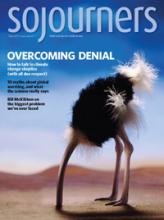In a small, unfinished art studio, a man named Mahmud paints the memory of how his village looked as it was destroyed by a tsunami. As the camera follows his careful brushstrokes, he reflects upon this process.
"As soon as I hold a paintbrush, I start to remember my child, and my heart starts pounding. Every day my painting brings back those memories. So, full recovery is never going to be possible for me. But ... I will always carry the stories of my children with me. If something makes me happy and I feel good, then I remember my children and the flavor of the rice that we ate together." He lost four of his children and more than half of his village.
Mahmud's story is just one of myriad personal tragedies caused by the Indian Ocean tsunami that tore through Southeast Asia on Dec. 26, 2004, claiming more than 283,000 lives. He is one of the survivors featured in the documentary film Kepulihan: Stories from the Tsunami, directed by David Barnhart. Kepulihan, an Indonesian word for the process of healing and recovery, is an intimate look at the lives of three individuals over the four years following the disaster, telling each person’s story in their own words.
Last fall, Kepulihan aired on ABC network affiliates for eight weeks as a recommended film of the Interfaith Broadcasting Commission. It has been selected for the Martin Luther King Jr. D.R.E.A.M. Festival, and screened at the Carter Center in Atlanta, the New School in New York, film festivals, and churches across the country.
Read the Full Article
